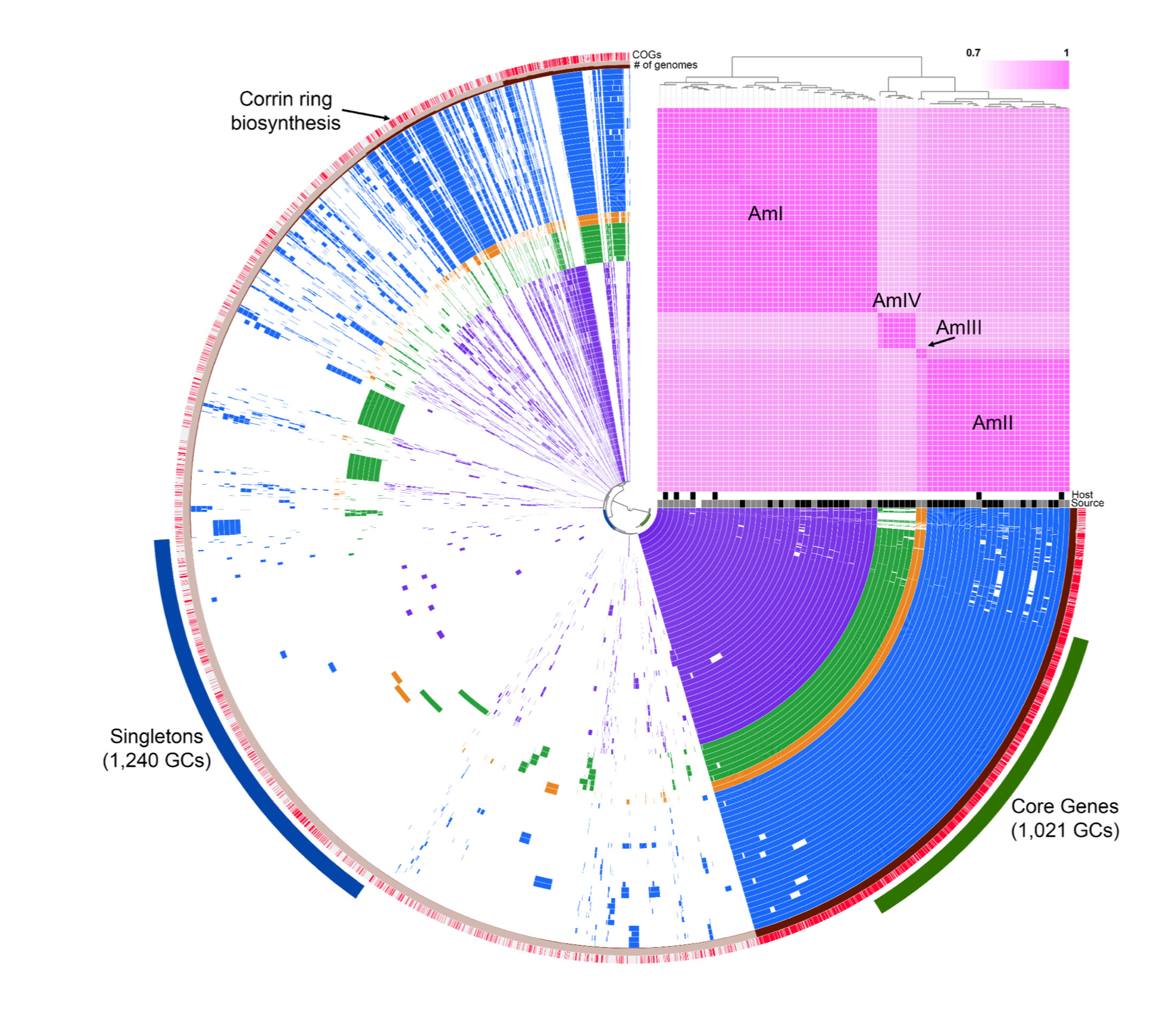A widespread member of the microbial community in the human gut may be able to aid its hosts’ health by synthesizing vitamin B12, according to experimental results recently published in Applied and Environmental Microbiology by CSUN microbiologists and collaborators.
Associate Professor of Biology Gilberto Flores and his lab, including postdoc Nina Kirmiz, lab manager Estefani Luna, Master’s student Nicholas Rhoades, and undergraduate researcher Kadir Galindo, worked with collaborators at Oak Ridge National Laboratory and the University of Tennessee Knoxville to examine the genetic and functional diversity of the bacterium *Akkermansia muciniphila*. Between one and four percent of the microbial community living in most people’s guts is *A. muciniphila*, and higher abundance of the bacterium has been linked to digestive health. However, how precisely *A. muciniphila* benefits the people who host it isn’t known.
To zero in on the bacterium’s possible functions, the team compiled a "pangenome", a reconstruction of genes shared among 75 samples of Akkermansia taken from humans and mice. This revealed four clusters of similar strains, "phylogroups" that differed sufficiently from each other to be, potentially, separate species of Akkermansia. Inventorying genes shared across phylogroups, the coauthors identified enzymes associated with the synthesis of Vitamin B12. They assayed new Akkermansia samples from a group of healthy human adults, to confirm the presence of actively transcribed genes required to make Vitamin B12, then confirmed metabolic activity consistent with B12 synthesis in cultures of bacteria from one of the four phylogroups.
The authors note they haven’t demonstrated that human hosts benefit from Vitamin B12 produced by Akkermansia in their guts, but they do detail known, potentially beneficial, outcomes of B12 production in the environment of the human gastrointestinal tract. Their work provides a solid starting hypothesis for future work demonstrating how a single member of the gut microbiome might contribute to human health.
The full paper is available Open Access on the journal website.
Image: A diagram of the “pangenome” inventory of genes found in 75 Akkermansia genome assemblies — each genome is a circle within the arc, with gene presence indicated by colored arc segments. The inset heatmap illustrates the ordering of the genomes based on membership in four phylogroups clustered by overall similarity. (Kirmiz et al 2020, Figure 1)

